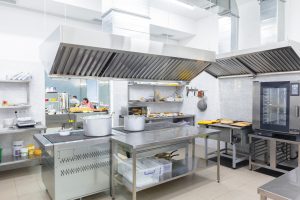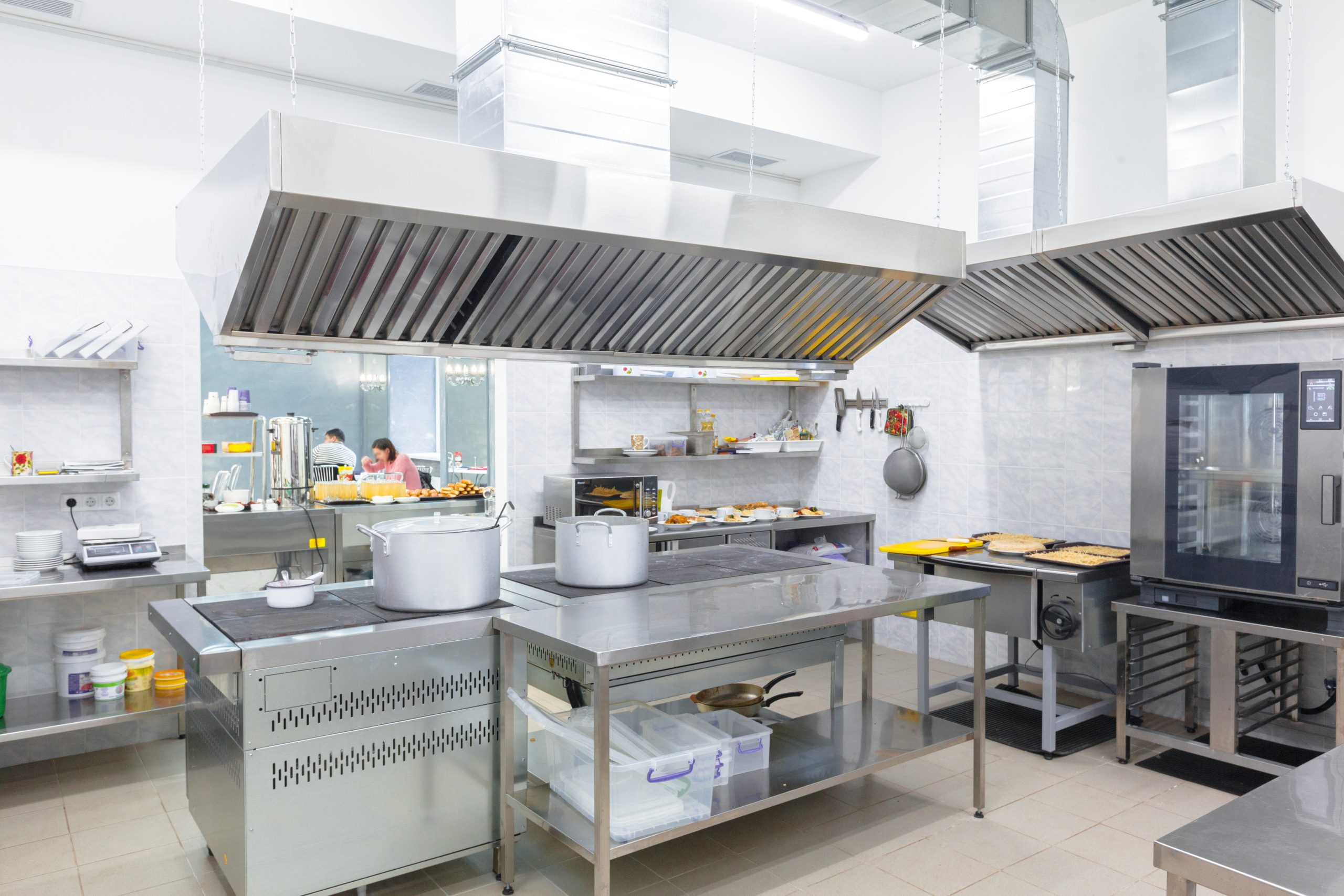
Saving on energy comes with a host of benefits, and many people, especially business owners, are finding ways to operate more efficiently.
For some, though, the question remains: How do you save energy at your restaurant? Well, look no further. Here is the ultimate guide to the best energy-saving equipment for fine restaurants, roadhouses, and everything in between.
- Consider installing an energy management system.
An energy management system (EMS) is a system used to monitor, control, and optimize energy consumption in a building or facility. EMSs can help businesses to reduce energy costs, improve sustainability, and meet regulatory requirements. Here are some key features of an EMS:
- Monitoring: An EMS typically includes sensors and meters to measure energy consumption and identify areas of high energy use.
- Control: Energy consumption can be controlled by an EMS by automatically adjusting systems, such as lighting and HVAC, based on occupancy, time of day, and other factors for optimal energy use.
- Analysis: An EMS can provide data and analytics on energy consumption patterns, allowing businesses to identify areas of inefficiency and make informed decisions on energy management.
- Reporting: An EMS can provide reports and dashboards to track energy consumption, costs, and savings over time.
Here at GWT2 Energy, we understand that businesses of all sizes need solutions that fit their budget, and that’s why we tailor our EMS options to meet the unique needs of each building. Our team works closely with multiple EMS providers to ensure that we implement the best possible solution for your business, helping you save big on energy costs.
Implementing an EMS can help businesses to reduce their energy consumption, lower operating costs, and improve their sustainability. Like all investments, there will be an initial upfront cost, but businesses are bound to make that money back in no time with the money they will save on the energy bill.
- Update old appliances.
Energy-efficient appliances are designed to use less energy than their traditional counterparts, often by incorporating more efficient motors, compressors, and other components. While changing out appliances has a higher upfront cost, energy efficient appliances can greatly help to reduce energy consumption and lower operating costs over time, making the venture a beneficial investment.
Perhaps the three most important appliances in any restaurant are the oven, dishwasher, and refrigerator. Here is more information on how each of those pieces of equipment can be upgraded to benefit your bottom line.
Ovens
Energy-efficient ovens are designed to use less energy than traditional ovens, which can help to reduce energy consumption and lower operating costs for restaurants.
There are several types of energy-efficient ovens available on the market, each with its own unique features and benefits. When choosing an energy-efficient oven for a restaurant, it is important to consider factors such as cooking capacity, ease of use, and overall energy efficiency. Here are four ovens you may consider installing in your kitchen:
- Convection ovens: Convection ovens use fans to circulate hot air around the food, reducing cooking times and temperatures. This can help to reduce energy consumption and lower operating costs.
- Combination ovens: Combination ovens can perform multiple functions, including baking, roasting, and steaming, which can help to reduce the need for multiple appliances and lower energy consumption.
- Induction ovens: Induction ovens use magnetic fields to generate heat directly in the cooking vessel, reducing cooking times and energy consumption.
- Energy Star certified ovens: Energy Star certified ovens meet strict energy efficiency guidelines set by the US Environmental Protection Agency (EPA). If you use an Energy Star certified oven, you can be sure your oven is wasting little energy.
Dishwasher
Energy-efficient dishwashers are designed to use less water and energy than traditional models, which can help to reduce operating costs and lower environmental impact. Here are some features of energy-efficient dishwashers for restaurants:
- Low water consumption: Energy-efficient dishwashers use less water per cycle than traditional models. This reduces water consumption, which not only lowers water bills but also helps to conserve water resources.
- Efficient water heating: Heating the water used in a cycle can take a great deal of energy, and efficient dishwashers have heating elements that use less energy to heat the water, reducing energy consumption and operating costs.
- Shorter cycle times: Energy-efficient dishwashers often have shorter cycle times than traditional models, which reduces energy and water consumption.
- High-temperature sanitizing: Many energy-efficient dishwashers utilize high-temperature sanitizing rather than chemicals to sanitize dishes. This can be more energy-efficient and reduce the need for chemicals.
- Energy Star certification: Like the Energy Star certified ovens mentioned above, Energy Star certified dishwashers meet strict energy efficiency guidelines set by the EPA and complete the cleaning cycles in the most efficient manner.
Refrigerators
No restaurant can operate without a refrigerator, so why not use one that will help you save the most money? Here are some features of energy-efficient refrigerators for restaurants:
- High energy efficiency rating: The EPA has also rated the most energy-efficient refrigerators. Look for models with a high Energy Star rating to ensure maximum energy efficiency.
- LED lighting: LED lighting, which uses less energy than traditional lighting and lasts longer, allows refrigerators to use less energy when the door is open and the light is on.
- Efficient compressor: Energy-efficient refrigerators usually have an efficient compressor that uses less energy to keep the refrigerator cool.
- Optimal insulation: Optimal insulation works to keep the cool air inside, reducing the amount of energy required to maintain the desired temperature.
- Self-closing doors: Energy-efficient refrigerators often have self-closing doors to prevent cold air from escaping, reducing energy waste.
It is important to note that for all updates to appliances, the actual savings will depend on a variety of factors. The size and type of appliance, the frequency of use, and the local energy rates will all play a role in determining how much is knocked off the bill. However, in general, energy-efficient appliances can help restaurants save money on energy costs and improve their overall sustainability.
3. Invest in renewable energy.
There are several ways that a restaurant can use renewable energy to reduce its reliance on non-renewable sources, which add considerable expense each month. These sources of energy also lower a restaurant’s environmental impact. Here are some ideas:
- Solar panels: Installing solar panels on the roof or on a separate structure can provide a reliable source of renewable energy for a restaurant. The panels can be used to generate electricity to power appliances, lighting, and HVAC systems.
- Wind turbines: Depending on the location and available space, wind turbines can also be used to generate electricity for a restaurant, spinning day and night to produce renewable energy for the business.
- Geothermal systems: Geothermal systems can be used to heat and cool the restaurant by utilizing the constant temperature of the earth. These systems can be used to reduce heating and cooling costs, helping the bottom line.
- Biogas: Biogas is a renewable energy source that can be generated by collecting and processing organic waste, such as food scraps, which restaurants typically have in plenty. The biogas can then be used to generate electricity or heat for the restaurant.
- Energy storage systems: If a restaurant owner does take the plunge into renewable energy, he or she may want to consider having an energy storage system, such as batteries, that can be used to store excess energy generated by renewable sources during peak production times. This energy can then be used during periods of low production, such as at night or during cloudy weather.
When using renewable energy in a restaurant, it’s essential to budget for the initial cost of the equipment, ongoing maintenance costs, and any regulatory requirements (some of these can be at a considerable cost). However, in the long run, using renewable energy may help reduce operating costs, increase energy independence, and improve the restaurant’s sustainability.




